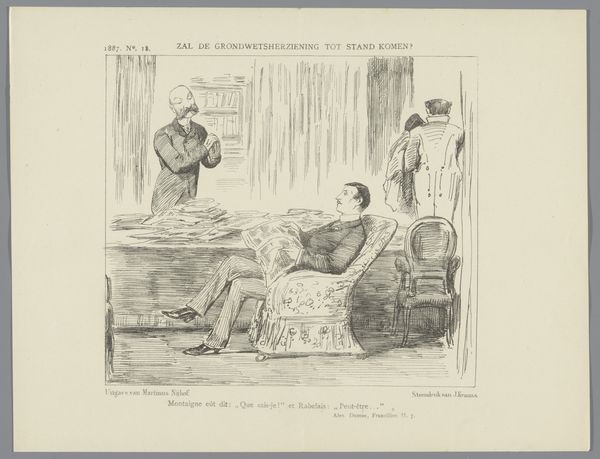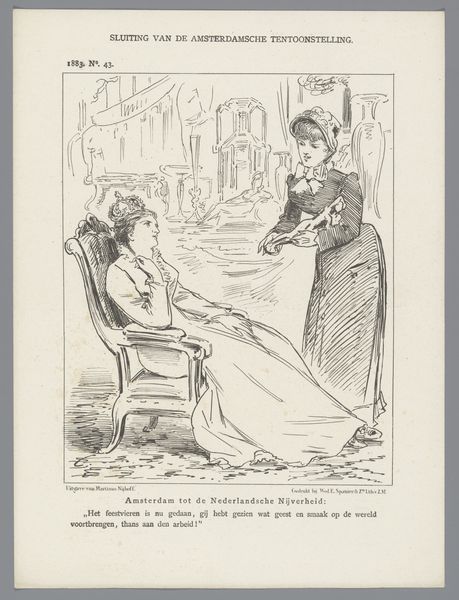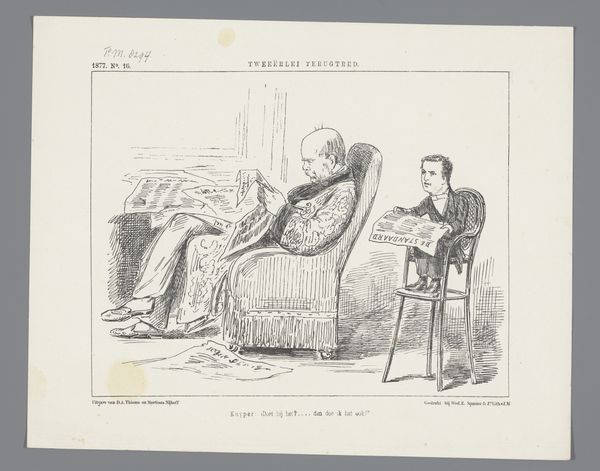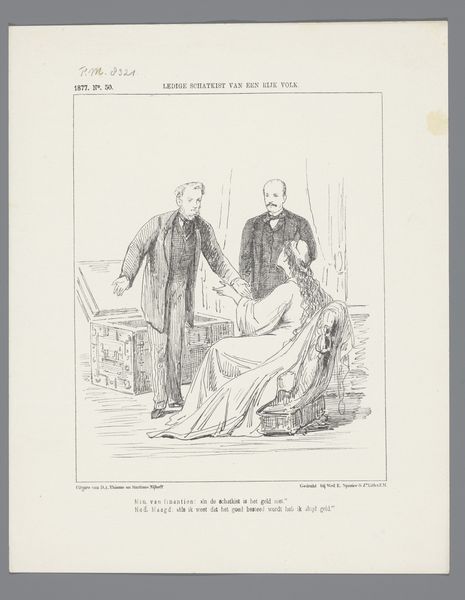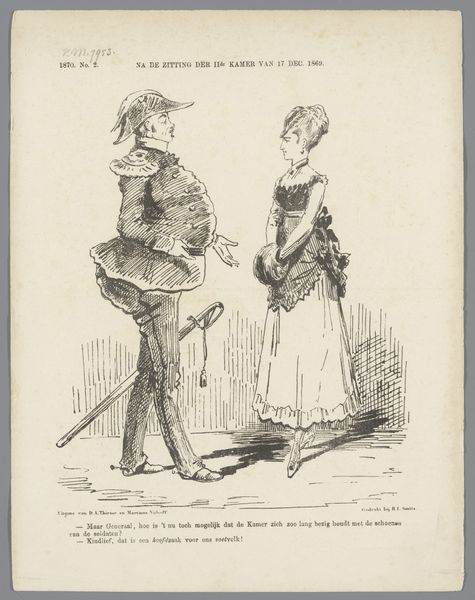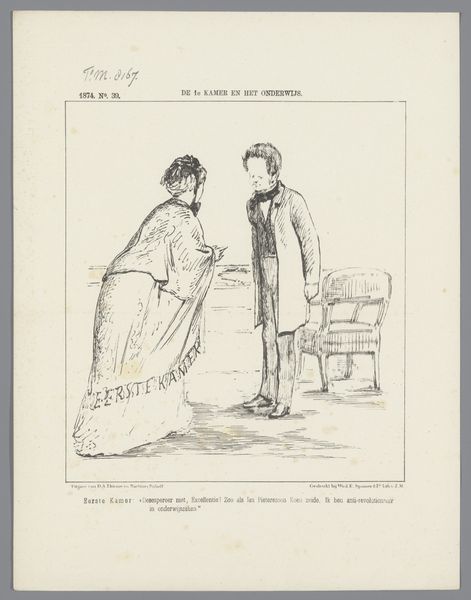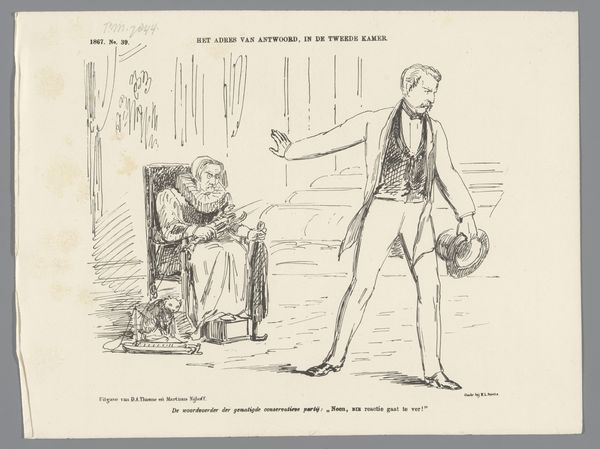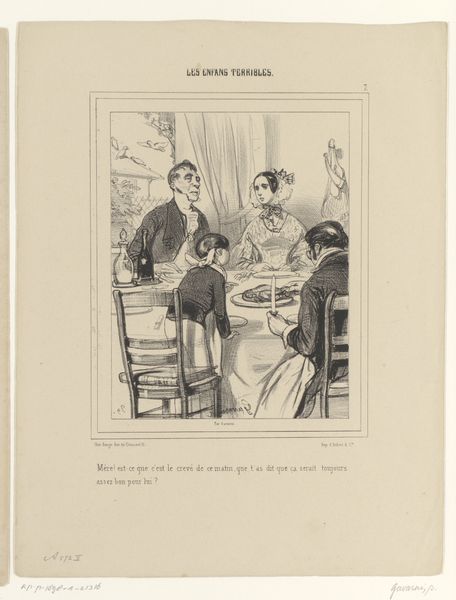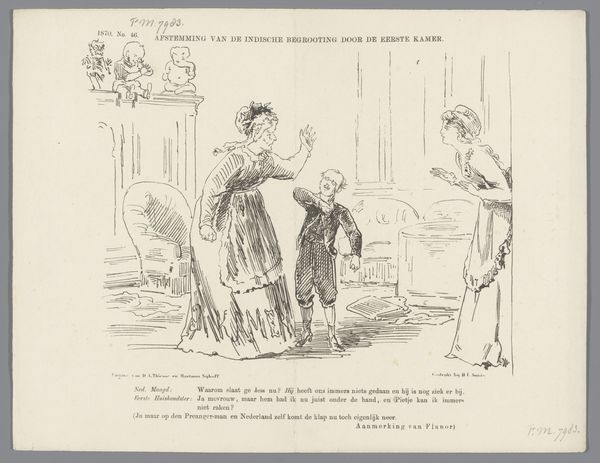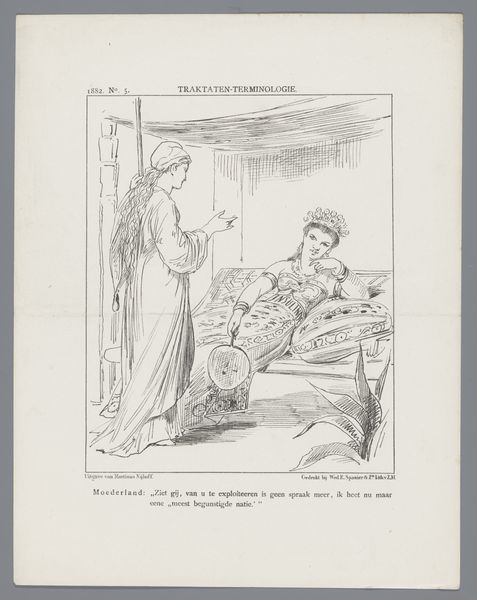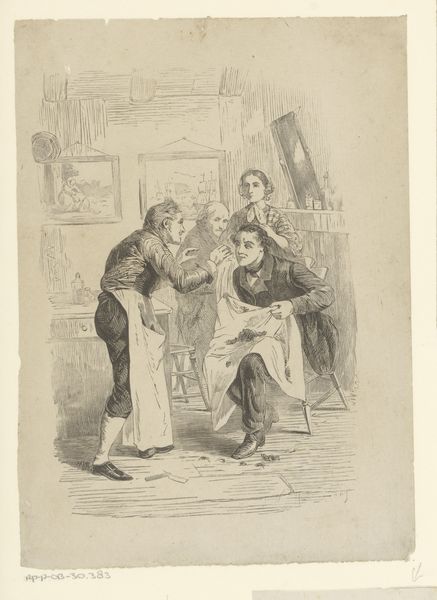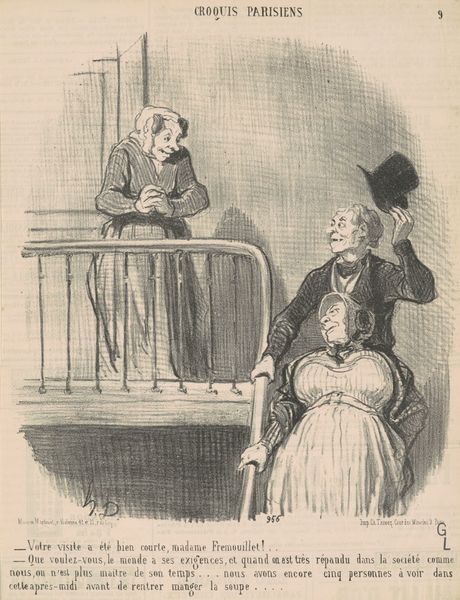
Spotprent op de debatten in de Eerste Kamer over de Rijnspoorwegmaatschappij, 1875 1875
0:00
0:00
drawing, pen
#
drawing
#
comic strip sketch
#
caricature
#
pen
#
genre-painting
#
modernism
Dimensions: height 215 mm, width 275 mm
Copyright: Rijks Museum: Open Domain
Curator: This drawing, created in 1875 by Johan Michaël Schmidt Crans, is titled "Spotprent op de debatten in de Eerste Kamer over de Rijnspoorwegmaatschappij," or "Cartoon on the debates in the Upper House regarding the Rijnspoorwegmaatschappij." It's executed with pen, and immediately gives me a feeling of social commentary. What strikes you first? Editor: It's the rawness of the line work that stands out. You can practically feel the scratch of the pen on the page. And the scale—there's a stark contrast between the towering woman and the diminutive boy that pulls me right in. Curator: Precisely. Notice how the artist utilizes visual cues, such as the oversized chair, to convey a sense of authority and power. It reminds us of archetypal scenes where figures in positions of dominance scrutinize those they oversee. Editor: Absolutely, and I am curious about this "Ferrie" scrawled on the tablecloth. Is that referencing the material conditions surrounding the railway debates? Maybe some type of fabric deal gone awry influencing decisions being made by the depicted maternal figure seated in this authoritative space? The visible textual context adds another layer for sure. Curator: Indeed! The text gives us insight into its specific political moment in Dutch history. In a broader symbolic sense, perhaps this child represents some sort of moral transgression in railway deals. The artist makes the scene universally recognizable in its visual structure by echoing classic depictions of morality tales through archetypes and characterizations. Editor: It makes you wonder, what other deals were done or are being done under the cloth of statehood. This critical commentary emphasizes labor behind politics, suggesting there are deeper issues interwoven into public affairs that call into question consumer ethics beyond commodity or train rails themselves. Curator: The interplay of the scene is complex in how a child figure becomes more than a symbol of pure innocence. Instead the picture plays upon how all individuals in public service may suffer through such character assessments under parliamentary scrutiny or a 'parent' reprimanding any action viewed inappropriately for personal agenda against society at large. Editor: I agree. From that angle, you start really dissecting at whose expense are these gains coming, right. And while looking in the scope in context. I'm just more interested material side from who all benefits off resources used up at which stage and whose hands produced work overall; so I ask how will people remember their hands as contributing during period and how they would want seen compared those times based context given versus history recorded formally instead maybe differently like depicted by Schmidht Crans and if material accounts differed radically... Curator: It gives one a whole new context. Editor: Exactly! That raw ink encapsulates not just form, but also reveals power's touch at various historical levels.
Comments
No comments
Be the first to comment and join the conversation on the ultimate creative platform.
